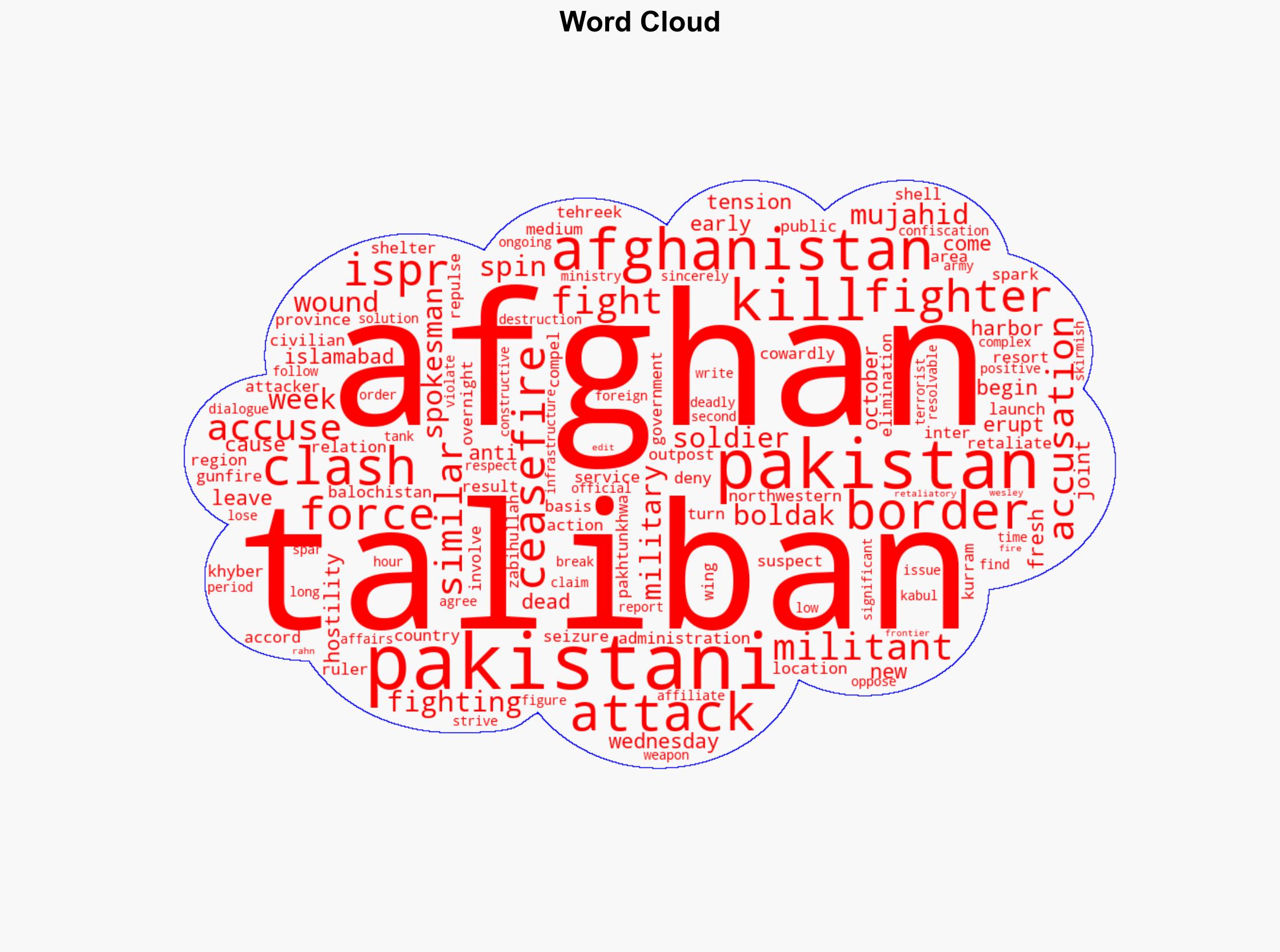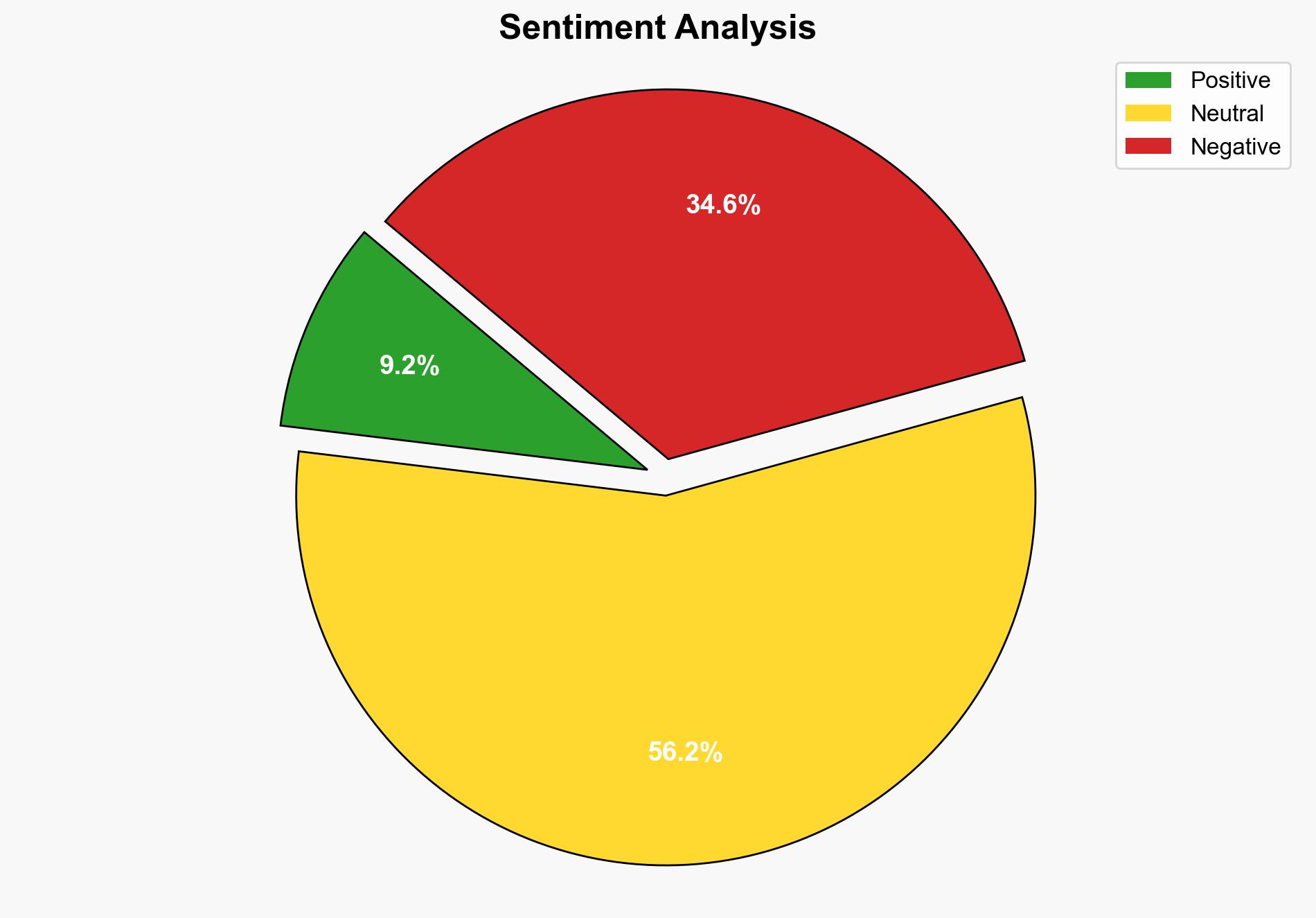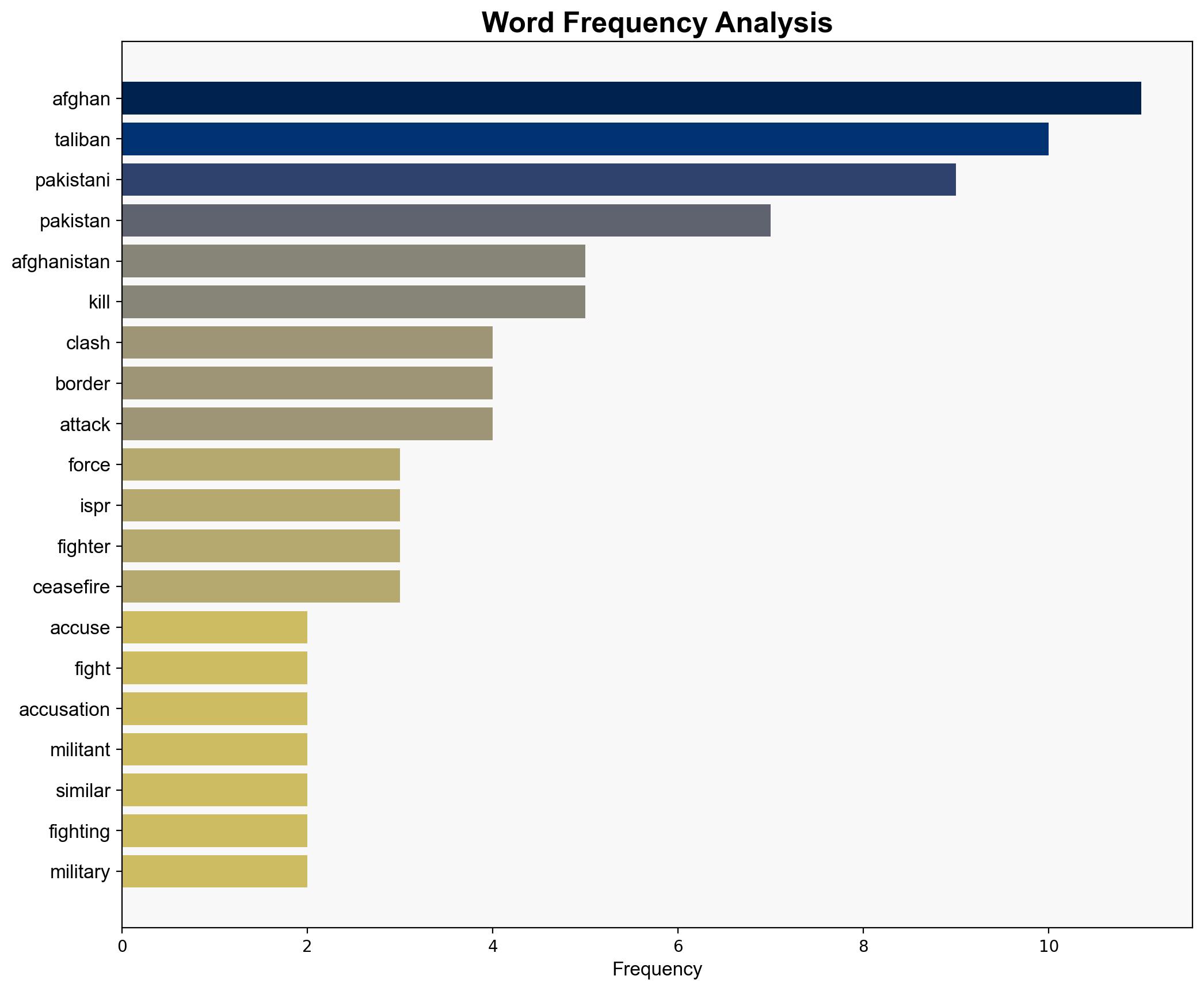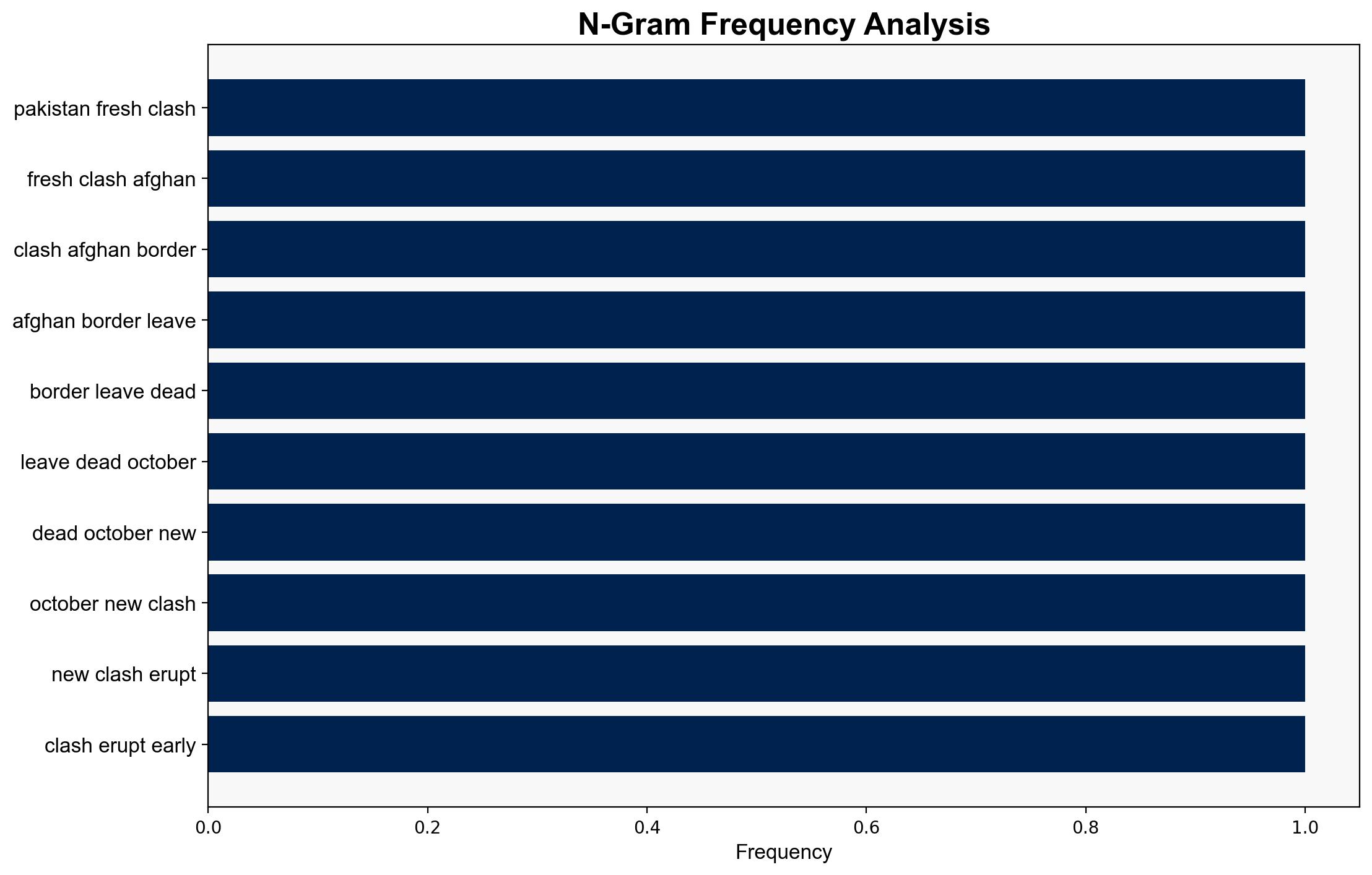Pakistan Fresh clashes on Afghan border leave several dead – DW (English)
Published on: 2025-10-15
Intelligence Report: Pakistan Fresh clashes on Afghan border leave several dead – DW (English)
1. BLUF (Bottom Line Up Front)
The recent clashes on the Pakistan-Afghanistan border highlight escalating tensions with potential for further violence. The most supported hypothesis is that these skirmishes are a result of mutual accusations of harboring militants, exacerbated by historical distrust. Confidence in this assessment is moderate. It is recommended to engage in diplomatic dialogue to de-escalate tensions and establish a joint monitoring mechanism to verify claims on both sides.
2. Competing Hypotheses
1. **Mutual Accusation Hypothesis**: The clashes are primarily driven by mutual accusations of harboring militants, with both Pakistan and Afghanistan using these claims to justify military actions and strengthen domestic political positions.
2. **Strategic Distraction Hypothesis**: The clashes are being used by either or both governments as a strategic distraction from internal issues, such as economic problems or political instability, by rallying nationalistic sentiments against a historical adversary.
3. Key Assumptions and Red Flags
– **Assumptions**: Both hypotheses assume that the reported military actions and accusations are accurate and not exaggerated for political gain. It is also assumed that both governments have control over their respective military forces.
– **Red Flags**: The lack of independent verification of the events and the potential for misinformation or propaganda from both sides. The historical context of distrust between the two nations may bias interpretations.
– **Blind Spots**: The role of third-party actors, such as local militant groups, who may have an interest in perpetuating conflict for their own gain.
4. Implications and Strategic Risks
The ongoing skirmishes risk escalating into a broader conflict, potentially drawing in regional powers and affecting international trade routes. The economic impact could be significant, particularly if border closures occur. Cybersecurity threats may also increase as both sides could resort to cyber operations to gain intelligence or disrupt communications. Geopolitically, prolonged conflict could destabilize the region, affecting neighboring countries and international relations.
5. Recommendations and Outlook
- Initiate third-party mediation to facilitate dialogue between Pakistan and Afghanistan, focusing on establishing a joint verification mechanism for border incidents.
- Increase intelligence sharing with allies to monitor the situation and prevent misinformation from escalating tensions.
- Scenario Projections:
- Best Case: Successful diplomatic intervention leads to a lasting ceasefire and improved bilateral relations.
- Worst Case: Escalation into a full-scale conflict, drawing in regional powers and disrupting international trade.
- Most Likely: Continued sporadic clashes with periodic diplomatic engagements attempting to stabilize the situation.
6. Key Individuals and Entities
– Zabihullah Mujahid (Afghan Taliban government spokesman)
– Inter-Services Public Relations (ISPR) of Pakistan
7. Thematic Tags
national security threats, cybersecurity, counter-terrorism, regional focus





